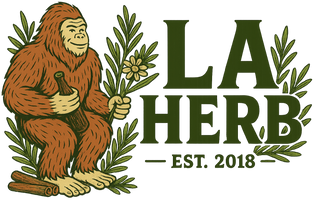Coltsfoot Flower Whole (Tussilago Farfara)
Coltsfoot Flower Whole (Tussilago Farfara) - 1 oz is backordered and will ship as soon as it is back in stock.
Couldn't load pickup availability
Coltsfoot Flower Whole (Tussilago farfara) is a traditional herb known for its bright yellow, daisy-like blossoms and long-standing use as a respiratory soother and lung tonic. These carefully harvested whole flowers retain their soft texture and natural fragrance, making them ideal for herbal teas, infusions, and topical preparations.
Traditionally used in both Western and European folk medicine, coltsfoot has been valued for its ability to ease coughs, calm throat irritation, and support the respiratory system. It is commonly included in blends for dry or spasmodic coughs, hoarseness, or chest discomfort, especially during the colder months or in cases of chronic irritation.
In herbal practice, Coltsfoot is often combined with other respiratory-supporting herbs such as mullein, marshmallow root, licorice, and elecampane to create gentle and effective formulas for the lungs. It has a mild, slightly sweet, and earthy flavor when steeped.
Each batch of Coltsfoot Flower Whole (Tussilago farfara) is carefully dried and handled to preserve its visual quality and soothing properties. While traditionally used and well-known in herbalism, coltsfoot contains small amounts of naturally occurring pyrrolizidine alkaloids (PAs), so it should be used in moderation and not intended for long-term use without practitioner guidance.
Whether used in soothing teas, respiratory blends, or herbal compresses, coltsfoot flowers offer a time-honored, gentle approach to calming the lungs and promoting clear, comfortable breathing.
Also Known As: Kuan Dong Hua, Coltsfoot Flower, Flos Farfarae, Tussilago Flower, Chinese Coltsfoot, Winter Bloom
Nutrients: Mucilage, flavonoids (e.g., rutin, quercetin), triterpenes, sterols, pyrrolizidine alkaloids (in small amounts), volatile oils, tannins
Notes: In Traditional Chinese Medicine, Kuan Dong Hua is used to moisten the lungs, stop cough, and transform phlegm, especially for chronic cough and wheezing. The flower has a warm and slightly bitter/sweet profile. While effective, it contains trace pyrrolizidine alkaloids, which can be toxic to the liver in large or prolonged doses. Traditionally used in small quantities and short durations, particularly in respiratory formulas.






